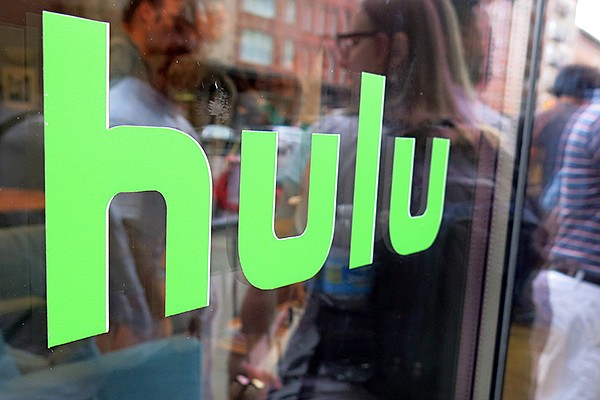FAYETTEVILLE — According to Nielsen, nearly 17 percent of U.S. households were without pay TV services by the end of 2016, an increase of 68 percent from 2012.
Instead, many Americans watch their TV on a streaming device like Roku, Amazon Fire TV or Apple TV. Many people have no use for live TV and spend their viewing hours on Netflix.
I cut cable earlier this year. I invested in a $79 Roku and a $35 digital antenna, and have saved about $90 per month. Admittedly, I don’t watch much TV, so those two investments, along with a quality Internet connection, have been sufficient. I also live in a city with the infrastructure in place for high-speed Internet, whereas many rural areas are sorely lacking in that regard.
Those who want to watch more live TV have plenty of options outside of a cable or satellite bill. This time last year, I wrote about Sling TV and PlayStation Vue, over-the-top (OTT) services that provide live programming from networks previously only available on cable or satellite. Subscriptions ranged from about $35 to $45 per month and didn’t include long-term contracts like pay TV.
In the past year, three more providers — DirecTV, Hulu and YouTube — have launched competing services in the live OTT market. Social media sites like Facebook and Twitter are offering more live sports programming. Disney announced earlier this summer its intent to launch an OTT app that would include live ESPN programming.
It really is a fascinating time to watch tech giants fight to establish themselves in the market; like a digital land grab. Being in the market for selfies no longer is enough for Facebook; video games no longer are enough for PlayStation; user-generated videos no longer are enough for YouTube.
But it’s not just large corporations trying their hand at something new. Consider your local news sources: Local TV channels are aggressive online and send those endless push notifications to your cellphone; some newspapers produce as much video content now as written; and public relations departments are attempting to compete with traditional news outlets. The NBA’s Memphis Grizzlies, for instance, have launched a site that covers SEC football.
This website even has entered the market. We spent nearly a year developing our own OTT channel that now is available on Roku, Amazon Fire TV and AppleTV, as well as smartphones. You can find it by searching for “WholeHogSports” in the channel stores for any of those devices.
This new channel allows you to watch all the videos produced by WholeHogSports on your living room TV. The channel is comprised of mostly interviews with coaches and players, but will gradually grow into more, including on-camera analysis from our reporters, documentary-type programs related to the Razorbacks and … who knows?
There are so many services and so many ways to access them, it can be dizzying to keep up with it all. And for older generations, it can appear so confusing that cable seems worth the extra cost.
I spent the first two weekends of this college football season testing the streaming world, determined to access the same games I previously could with cable. After some Week 1 disappointments, Week 2 was more to my liking.
In order to access the games, I had to find a streaming service. I tested Sling and Vue in the past, but had trouble navigating both interfaces and both lacked some sports channels I had become accustomed to having with cable.
The game I wanted to see most on the first weekend was Colorado State's stadium debut against Oregon State, televised by CBS Sports Network. Hulu was the only OTT service that carried the channel, so I chose that one at $39 per month after a one-week free trial — still significantly less than cable.
But Hulu Live wasn’t yet available on Roku; only through an Apple beta app and on the Amazon streaming devices. I was able to access the Aug. 26 games only on my iPhone, then bought a $39 FireStick to access them Week 2.
That was a success.
Hulu understands that a significant portion of its live subscribers are there for sports. Not only does it allow you to favorite channels, it lists live sporting events. It's not quite the guide on your cable or satellite box, but it's close.
Other things I like: there is little-to-no buffering with a quality connection and you can rewind a channel for as long as you have been watching it. Hulu offers the staple channels for SEC fans, such as ESPN, ESPN2, ESPNU and SEC Network, but it appears that games on the alternate channel will have to watched through the ESPN app, which probably will require a separate subscription to another provider.
Arkansas' game against TCU this week should be accessible to most because it is on CBS, a network available via a digital antenna. It also will stream live on CBS Sports’ website, but only those in larger markets will be able to watch it live on the network’s OTT channel.
There will be similar pros and cons for streamers every game this year. Most of Arkansas' games will be shown on ESPN-affiliated networks.
We’ve come a long way in an over-the-top alternative to cable and satellite, but we're not there yet. The inefficiency between the networks that televise the games, the streaming companies that offer the networks and the devices relied on to reach consumers will ensure that live sports keep some hooked on cable and satellite.
Alternative technology needs to sync better, but the gap is closing.
A version of this article originally appeared in Hawgs Illustrated

